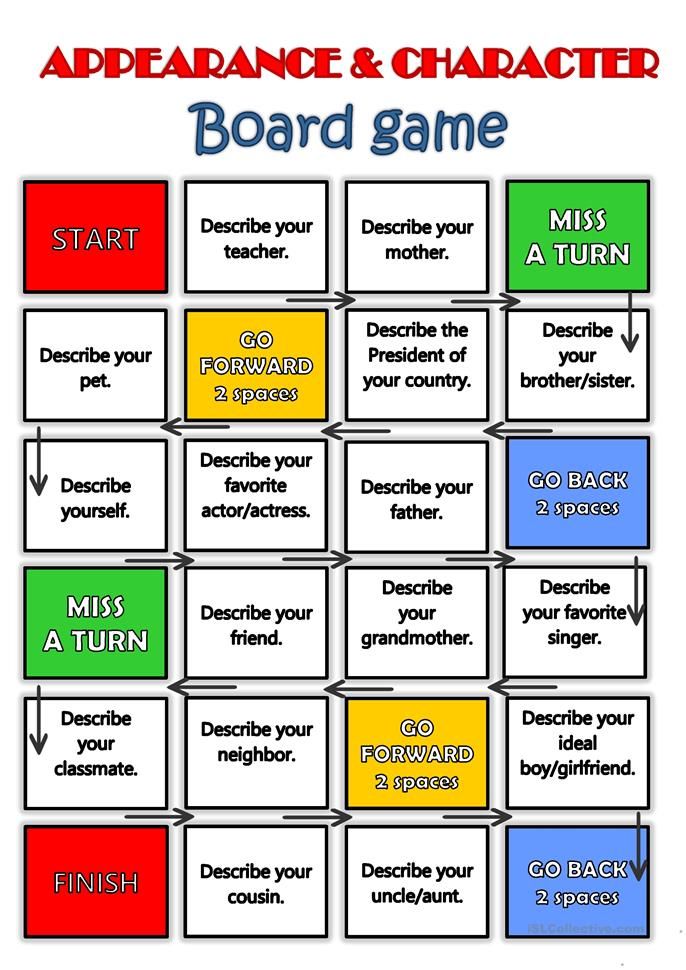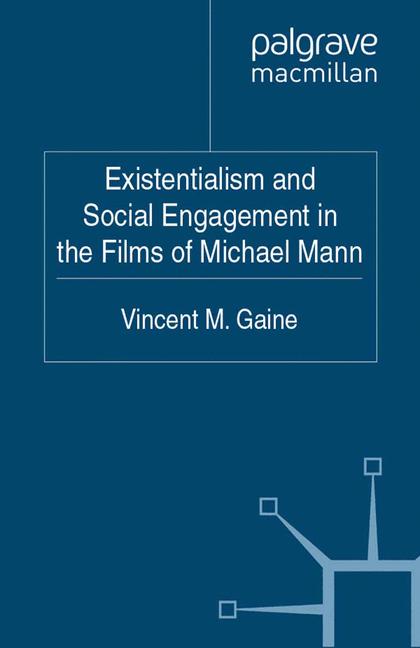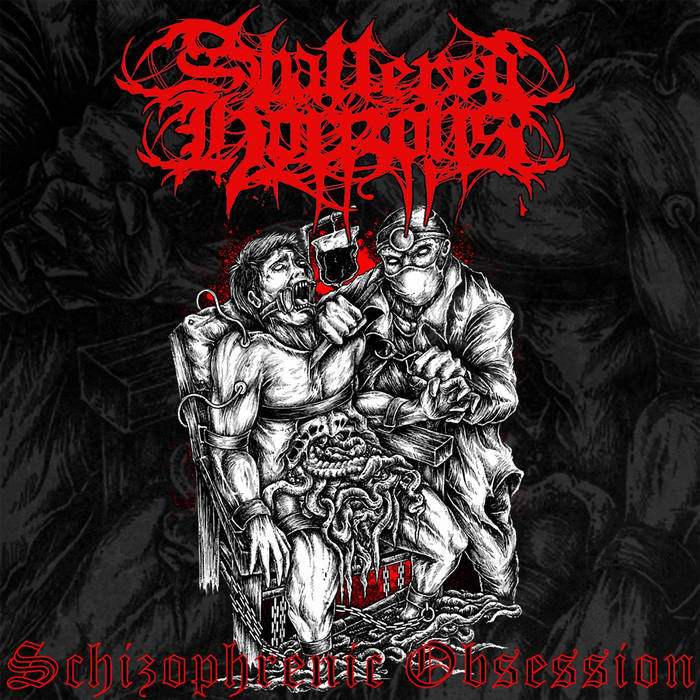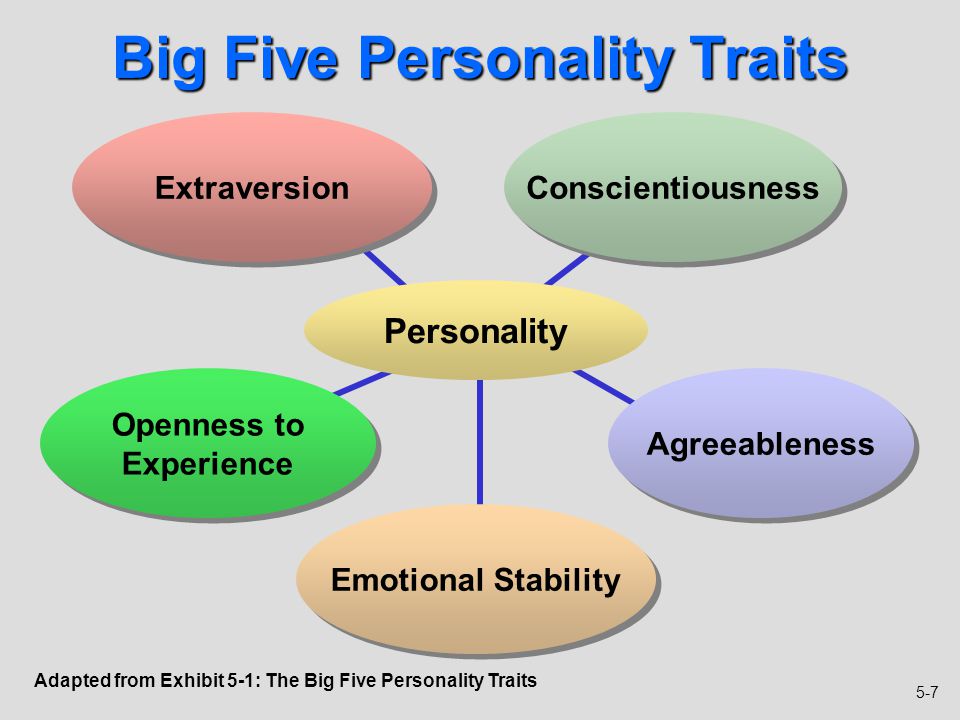Trauma counselling techniques
5 Trauma Therapy Techniques for Busy People
Navigating life after a traumatic experience can feel overwhelming. You might feel wonderful one moment but then find yourself distracted by flashbacks the next. If you don’t have access to trauma therapy or you’re searching for everyday coping strategies, grounding can help you calm your mind and focus on the present moment.
Grounding techniques help cope with trauma symptoms associated with post-traumatic stress disorder (PTSD). They can also help manage other forms of anxiety, including social anxiety and panic attacks. Grounding can help you cope with flashbacks, negative thoughts, and painful memories by “grounding” you. In other words, they bring you back into the present moment, reducing the likelihood that you’ll slip into dissociation or flashbacks.
The next time you’re feeling overwhelmed, try using trauma therapy grounding techniques to refocus your mind and start feeling better. Here’s how to get started.
1.
Set aside a few minutes each day to do a few exercises or stretches. If you’re feeling restless, try jumping jacks, jumping rope, or jogging in place to release some energy.
Take note of how your body feels with each movement, along with when your hands and feet touch the floor or move through the air. Exercising is a great way to live in the moment—you have to pay attention to your body, your breath, and the world around you. It has physical health benefits, too. Exercising for as little as 30 minutes each day is enough to release mood-boosting endorphins, which help you feel more energized and positive throughout the day.
2. Try the 5-4-3-2-1 method.
Working backward from 5, use your senses to notice what’s happening around you. For example, you might start by listing five things you see, then four things you hear, three things you can smell, two things you can touch, and one thing you can taste.
When using the 5-4-3-2-1 method to ground yourself, try to notice the little things you might not usually pay attention to, like the hum of your ceiling fan or the texture of your walls. Whether you’re working at the office or feeling overwhelmed in public, the 5-4-3-2-1 method can be a simple, effective anxiety management technique to gain control over your mind, push away any negative thoughts, and bring yourself back to the present moment.
Whether you’re working at the office or feeling overwhelmed in public, the 5-4-3-2-1 method can be a simple, effective anxiety management technique to gain control over your mind, push away any negative thoughts, and bring yourself back to the present moment.
3. Practice deep breathing.
Slowly inhale and then exhale. If you’re having trouble focusing on your breathing, say or think “in” and “out” with each breath.
Instead of applying pressure to “empty your mind,” just pay attention to your breathing and yourself, whether it’s the rhythm of your breath or the sounds of your breathing. Start by dedicating five or 10 minutes of your day to deep breathing exercises, and see how it makes you feel.
4. Notice how your body feels.
The next time you catch yourself in a cycle of negative thoughts, step out of time and check in with your body. This technique can be as simple or as complicated as you want to make it, and you can do it sitting, standing, or lying down.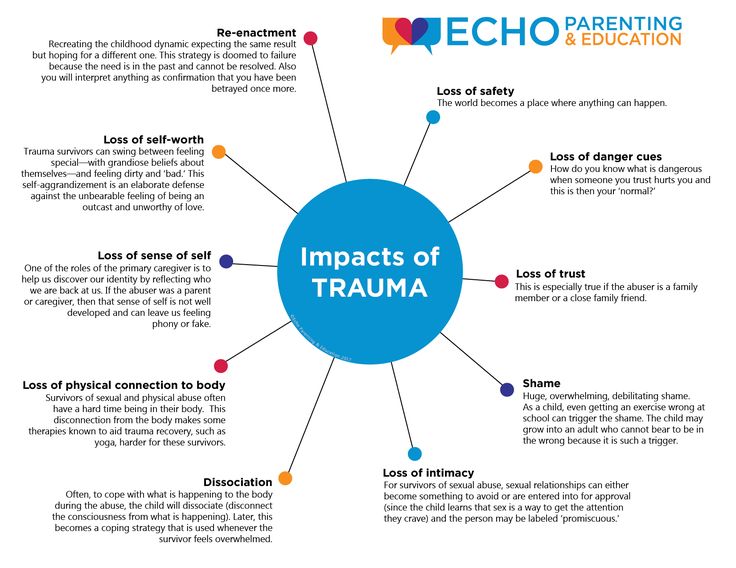
Start by observing how your body feels from head to toe, taking a few seconds to focus on each body part. Can you feel your heartbeat? Does your stomach feel full, or do you feel hungry? How do your feet feel against the floor?
5. Start journaling.
Getting into the habit of writing down your thoughts, feelings, and observations can improve your mood and ability to enjoy the present moment. Mindful journaling is all about examining whatever is going on in your head and expressing it on a page.
The physical act of writing ink on paper can bring you into the present moment. Start by writing about something you noticed that day, or try setting a few intentions for the week ahead.
Ready for an appointment?
Even though trauma therapy techniques can help you cope with stressful situations, it’s important to remember that they’re not a substitute for therapy sessions with a qualified trauma therapist. If you’re constantly feeling overwhelmed by symptoms of trauma, trauma therapy can create a safe space to address your emotional trauma with an experienced mental health professional.
To find a supportive trauma therapist, reach out to a mental health professional through The Therapy Group of NYC. We know that therapy can feel intimidating—and finding the time for therapy sessions can feel impossible if you’re juggling a busy schedule. That’s why we offer online therapy with flexible scheduling so you can access trauma treatment from the comfort of your own home.
No matter where you are in the healing process, one of our supportive trauma therapists will help you manage your trauma symptoms, cope with your emotional trauma, and gain insights into your mental health so you can live a more fulfilling life.
6 Skills-Your Trauma Toolkit — Integrative Psychotherapy Mental Health Blog
Trauma is comparable to an inner shattering. shattering of safety.
Shattering of beliefs.
Shattering of identity.
Or, shattering of a role in life.
You world has changed, and often you are changed, forever.
If you are a trauma survivor, you have the brave yet powerful job to rebuild. Rebuild yourself, your life and a new sense of hope and meaning.
Rebuild yourself, your life and a new sense of hope and meaning.
You reach out for therapy because research proves that good therapy will help you. Which it does.
However, trauma work goes beyond the walls of your warm, wise and skillful therapists office. You have your life before you walk into your therapy session, and your reality is with you as you walk out into the world, the world that you live in.
Your brain keeps working through the traumatic material you've processed in session. Processing is the brains way of attempting to heal, however, when something distressing happens the brain may experience flashbacks, nightmares or body memories after a frightening experience.
Because of this, it's important to have effective coping skills at your fingertips that you can use between sessions. Here are some six coping skills that can be used to support you, both in and out of session while you're engaged in trauma therapy.
1. Body ScanA body scan is an exercise where you bring attention to your body, while not trying to change anything you may notice.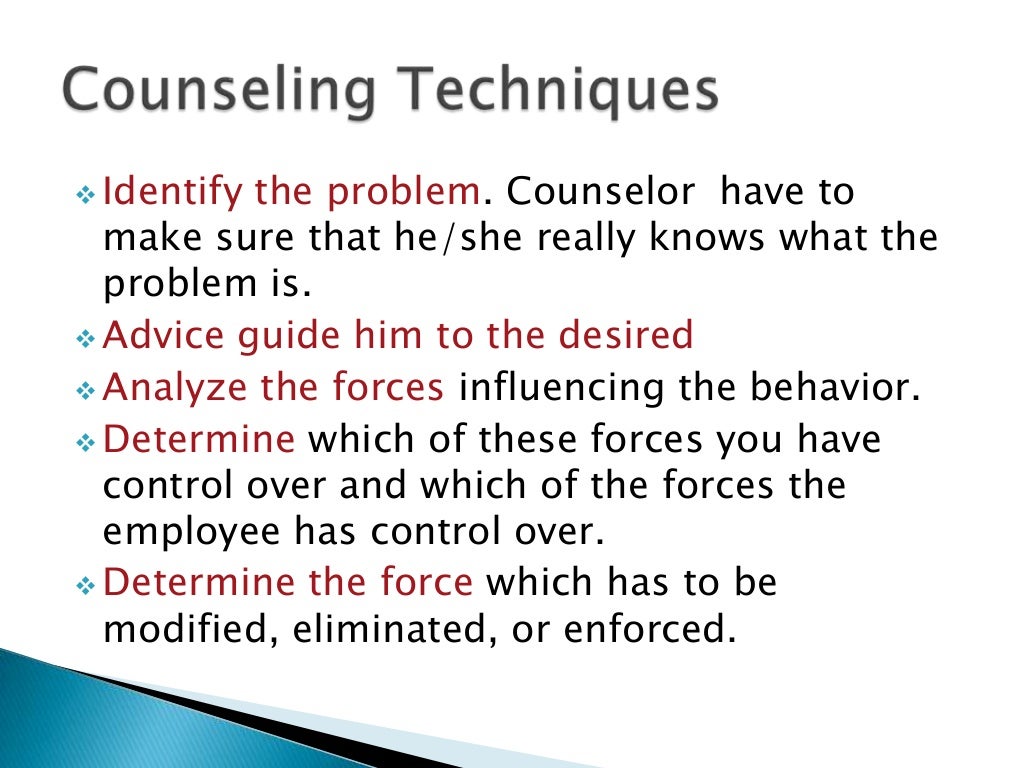 The goal is not specifically for you to relax, it is simply about raising awareness about what is happening in the present moment.
The goal is not specifically for you to relax, it is simply about raising awareness about what is happening in the present moment.
The body often experiences continued trauma symptoms, even long after the traumatic event has passed. Trauma responses include the body preparing to go into flight, fight or freeze, tensing the body, which takes an exhausting toll on you.
It might sound funny that this exercise isn't about changing anything, yet sometimes just noticing the tightness or the sensation is enough. When your body is already in stress mode, adding another "to do" often gets you trapped, so being able to engage in a mindful exercise is often the best option (Shapiro, 2001).
You start the body scan by either focusing on the top of your head, forehead, ears, cheeks, neck, and go down to each section of the body, or you can start from you hands or feet and slowly pay attention to other areas, noticing any tingling or sensations that come up. There's no wrong way to do the exercise. You might notice an itch, tightness, discomfort or you might not feel anything that all. Just notice. Breath through it and you've done the scan!
You might notice an itch, tightness, discomfort or you might not feel anything that all. Just notice. Breath through it and you've done the scan!
Safety switches are physical techniques that use different body senses to help you cope with difficult feelings. Experiment with different techniques until you find a specific posture, stance or even eye gaze that brings you back to a place of strength, a feeling of "grounded-ness" or in touch with your inner wisdom.
You can try to sit up, square your shoulders, and open your posture, maintaining a boundary between yourself and whatever you are facing. You can also try gently turning your lips up to something that is called "Half Smile".
Just turning the edges of your lips upwards sends a neurological shift to the brain and releases feel-good-hormones, tricking your brain into thinking you are actually happy, or have something to smile about. Try it, it may offer even just a subtle shift (Linehan, 2015).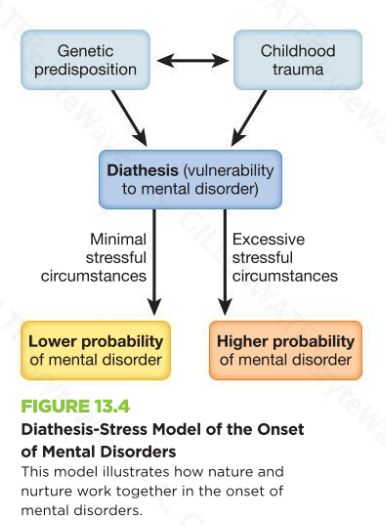
Coping ahead is a skill to use when you are worried about how you might feel, react or respond to a specific situation or event that is coming up.
What you do is to slowly imagine the exact scenario or situation, what difficulties you may have, including any urges, emotions or fears that you may experience. You then imagine what skill, belief or action plan you may need in order to get through.
For example, if you are going to visit a place where something traumatic happened, or even if you associate a location with something more subtle like it simply being a reminder to a time in your life that was hard or where you were ignored when you needed to be seen, imagine what it may be like to visit that place. Imagine practicing a mantra, checking in with a loved one or making sure to take breaks to see how you're doing, keeping yourself back from flooding into emotions that can override the present day experience.
Rehearse what you can do and say in any specific scenario. Doing this lets your brain use this as a quicker 'go-to' when stressed because you had practiced in advance (Linehan, 2015).
Doing this lets your brain use this as a quicker 'go-to' when stressed because you had practiced in advance (Linehan, 2015).
Containment is a skill that is foundational to beginning any kind of trauma work, as it is effective in utilizing the brain's natural ability to hold and "contain" material.
Containment requires the use of imagery, creating some kind of container that can hold upsetting material until you are steady and able to properly process it. You begin this exercise by imagining a container such as a box, a vault, a safe, a trunk, a storehouse or the like. The container should have a lid or a door that can be opened and closed by you, and it also needs to be big, deep and strong enough to hold whatever it is that is causing distress.
You practice using the container first with something of lesser stress, and see if your brain can imagine gently sweeping, scooping or placing the information, thoughts, feelings and worries into the container until it can be addressed.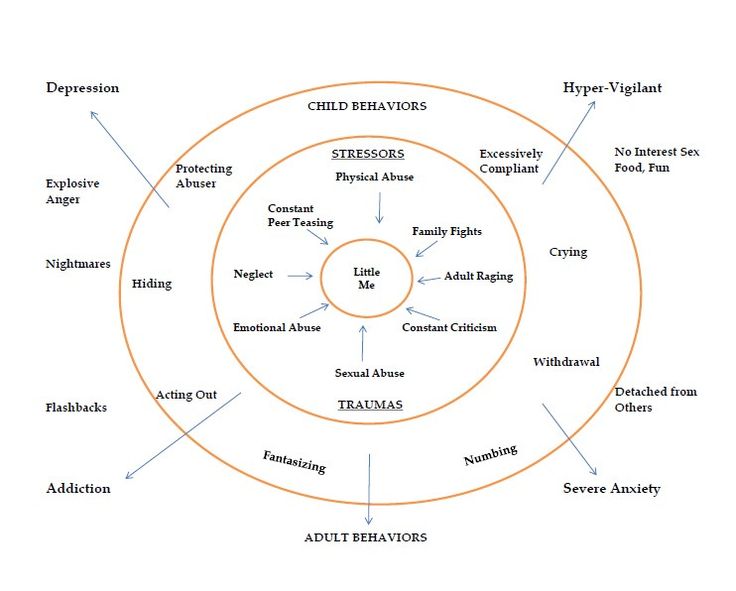
Practicing with less distressing information gives you information on what you may need to add. Do you need a lock, chains, or do you need windows, and a copy of a key to share with a loved one? A thermometer or timer that tells you when to take a break? You can take time finding the right "container" for yourself.
To be clear, this exercise is not about shoving away or ignoring information that is important.
Rather, it's a method to allow the brain to set aside information when there are trauma symptoms that are becoming overwhelming such a s thoughts, images and memories.
In session with my patients, we practice this and use ways to take a sliver at a time, eventually processing all that is important and necessary to be processed so that you can feel relief and reduction in the intense symptoms. Containment is an original skill that I learned in my earlier years of training in EMDR (Eye Movement Desensitization and Reprocessing) which is a wonderful, scientific-based tool that helps the brain process trauma memories (Shapiro, 2001).
When you begin noticing you are flooding or experiencing an overwhelmingly distressing feeling, use your senses and drop the memories or body sensations, rather throw yourself into doing the following.
Look around you and name 5 colors (green, red, yellow, blue, pink). Yes, say it out-loud, it helps.
5.Distancing Technique5 sounds (car honking, baby crying, shuffling paper, A/C, phone buzzing)
5 things you can touch (my skin, my nails, the blanket, my purse, my tie)
5 things you can taste (a piece of gum, mint candy, sip of coffee/tea, chocolate chip, ice cube)
5 things you can smell. (scented candle, freshly baked goods, fresh laundry, scent of a flower, perfume,)
Sometimes the images won't go away, and in those instances you may want to use a distancing technique, which creates distance between your inner and outer world.
This stops the flooding as you become aware of where your body is, and brings you mind in the here-and-now, separating you from the memory or past event.
One way to do this is by putting the thoughts, memories or sensations on a conveyer belt and slowly watch the image, sound and thoughts fade, ever so slowly. You can also imagine putting whatever is coming up onto a TV screen and dimming the image so it gets smaller and smaller, or even just use an imaginal remote and switch the channel.
6. Body MovementBessel van der Kolk, one of the world's trauma experts has done extensive research that proves that our body is our most underutilized resource. His specific research is about body movement and PTSD, and how yoga has been found to drastically decrease symptoms related to trauma. Yoga slowly teaches trauma survivors to learn to tune in, feel themselves in their skin and begin to connect mind and body in a gentle fashion. Since trauma forces the mind and body to form a split to survive (often referred to as dissociation), using yoga is a great way to slowly bridge that gap, while also teaching the body how to feel emotions in a non threatening way (Van der Kolk, 2007).
If you're not up to doing yoga, I encourage you to even just integrate a practice of stretching, taking a short walk or engage in another form of movement.
Any kind of movement shifts things in the body and offers positive effects, such as biking, dancing, running, or even singing and slightly moving your body to the beat of the song. Find your own way to feel your body and lean on the inherent capabilities your body has to self nurture and sooth.
For today, give one of these skills a try.
And hey, try it even when you're not stressed, your brain may be more responsive, and receptive to giving it a go when you are in a trauma heated moment.
And if you live in New York and are ready to engage in one on one work to do the deep work to experience relief, we are here for you.
At Integrative Psych, our team of trauma and anxiety therapists are here to support you as you heal and move on with your life.
At our practice, we offer EMDR therapy, Somatic therapy, Attachment-Informed methods, Cognitive therapy, Internal Family Systems/Parts work and Expressive methods to help you experience relief.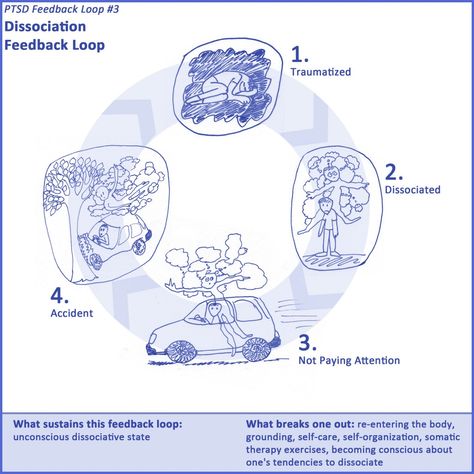
And, get your some FREE downloadable worksheets and download to deepen your connection with yourself and engage in some mindfulness activities..and more. Click here for access to FREE content made with you in mind!
Click below to schedule your free 15 minute consult to see how we can map out a personalized plan to help you heal!
Blessings to you on your road to healing!
Shapiro,R (2001): Eye Movement Desensitization and Reprocessing (EMDR): Basic Principles, Protocols, and Procedures, 2nd Edition Second Edition
Linehan, M (2015): DBT® Skills Training Manual, Second Edition Second Edition, Available separately: DBT Skills Training Handouts and Worksheets, Second Edition
Van der Kolk, B (2007):Traumatic Stress: The Effects of Overwhelming Experience on Mind, Body, and Society 1st Edition
Counseling of a traumatized person
psychology
Isaeva E.G., Sutaeva A.R.
COUNSELING OF INJURED PERSONALITY
Work with psychic trauma is one of the most urgent and demanded directions in modern psychological practice.
Trauma, according to G. Fischer, is a shell that wraps the soul and body in frozen tears, demobilization, disruption of the individual's defense mechanisms, decreased sensitivity, experiencing an imbalance between threatening circumstances and individual capabilities to overcome them.
A picture of the experience of a traumatized individual: a feeling of helplessness, insecurity, a prolonged shock in understanding oneself and the world, a feeling of abandonment, rejection, loss and anxiety, unfulfilled needs of unfinished feelings and emotions based on unfinished actions [1].
Types of injuries: sociogenic, technogenic, biogenic, psychogenic, abuse, i.e. physical and psychological violence in the family, and there is both a female and a male version of abuse.
Types of psychotraumas
PSYCHOGENIC BIOGENIC SOCIOGENIC
Emotional: intrapersonal conflict, resentment, separation. Transgenerational, symbiotic karma of the family. Military conflicts and wars. Terrorism. Extremism.
Terrorism. Extremism.
Violence, abuse, deprivation. premorbid disposition. Man-made disasters.
Betrayal, betrayal, loss. Archetypal unconscious models. Social transformations. Migrations.
Subjectivity, helplessness, anxiety. Submissive reflex. Religious conflicts
Prolonged shock. Paleo dissonance, and new secret territories of the brain Loss of identity, mode of existence of a personality
In the structure of biogenic traumas, one should especially note transgenerational trauma (symbiotic), characterized by the repetition of birth mistakes, “kind karma”, adopted parental trauma. "Karma of the clan" represents the unconscious program of the clan. Transgenerational trauma can pass through several generations of the same family. When there is trauma in the generations, the children who are born are already woven into the trauma of their parents. Then the family may experience repeating scenarios of life. Each of us is a link in the chain of generations, and sometimes, to our own surprise, we have to "pay the debts" of our ancestors. This kind of "invisible devotion to the family" pushes us to unconsciously repeat pleasant situations or sad events (ancestor syndrome). If a mother or father is traumatized, they cannot fully open emotionally to the child because they are afraid of contact with the traumatized parts of themselves. The child who is emotionally intimate with his parents also becomes involved in the experience of this trauma, and subsequently in his relationship will repeat the early learned patterns of weaving. The program of fate is a gradually unfolding unconscious plan, received with genes from parents and constantly reinforced by information from early childhood, mainly under the influence of the parents' lifestyle [9].
This kind of "invisible devotion to the family" pushes us to unconsciously repeat pleasant situations or sad events (ancestor syndrome). If a mother or father is traumatized, they cannot fully open emotionally to the child because they are afraid of contact with the traumatized parts of themselves. The child who is emotionally intimate with his parents also becomes involved in the experience of this trauma, and subsequently in his relationship will repeat the early learned patterns of weaving. The program of fate is a gradually unfolding unconscious plan, received with genes from parents and constantly reinforced by information from early childhood, mainly under the influence of the parents' lifestyle [9].
Such patterns can be passed down from generation to generation, carrying with them the hidden danger of re-traumatization in future generations. According to the psychoanalytic approach of Abraham, Terek, the “introduction” of the phenomena of the “crypt” and “ghosts” into descendants occurs as a result of trauma.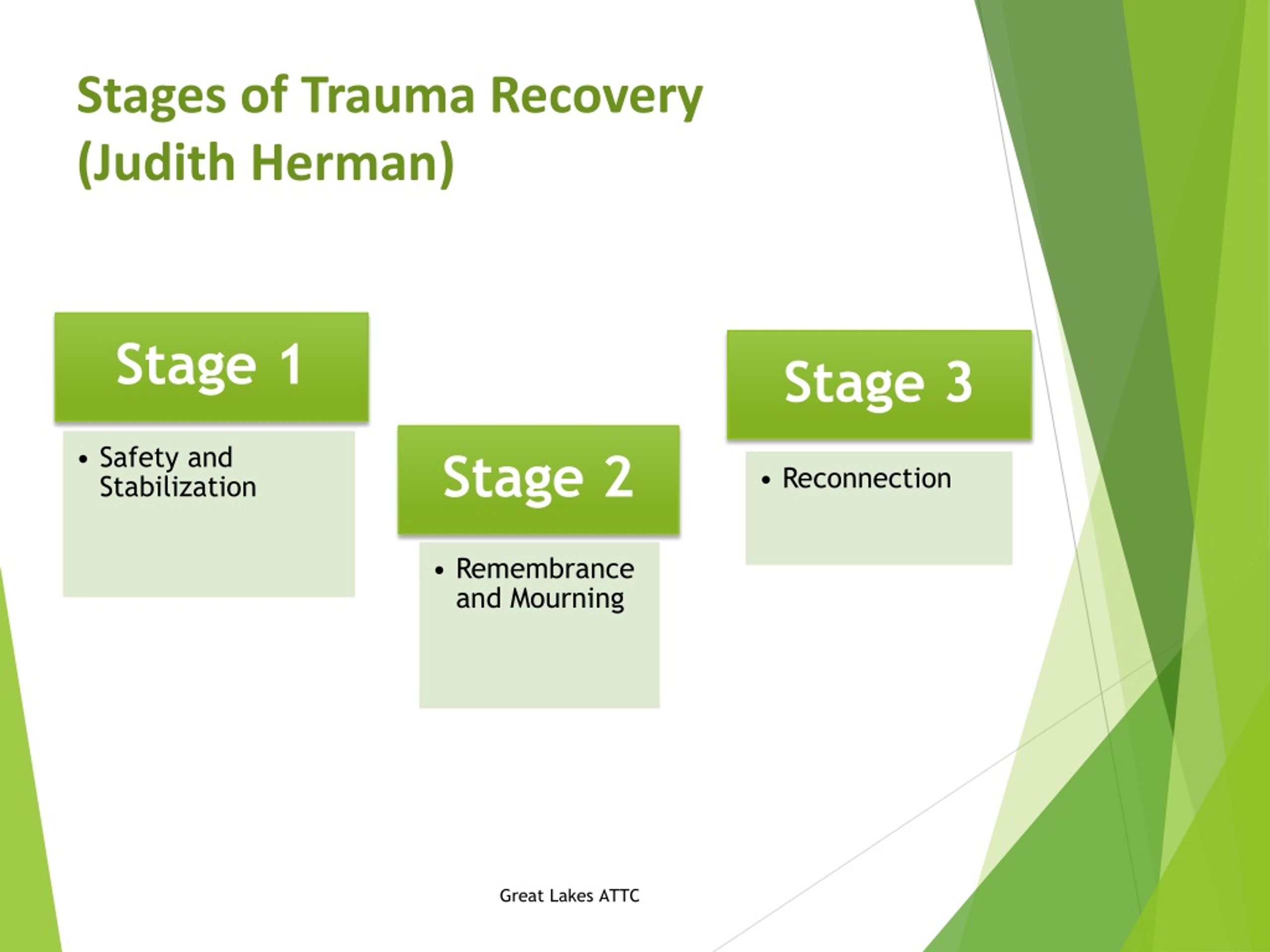 Etiologically, these manifestations are provoked by unjust events (a relative who died in a concentration camp or died from gases in the trenches, left without burial, prison, ruin, tuberculosis, cancer) or family secrets that are considered shameful (murder, incest, prison, placement in a psychiatric clinic). , ruin, illegitimate children, AIDS, losing cards, loss of family fortune). Such patterns can be passed down from generation to generation, carrying with them the hidden danger of re-traumatization in future generations. Traumatic experiences can cause severe attachment disorders, which in turn increase the likelihood of traumatization in the life of each individual member of the system.
Etiologically, these manifestations are provoked by unjust events (a relative who died in a concentration camp or died from gases in the trenches, left without burial, prison, ruin, tuberculosis, cancer) or family secrets that are considered shameful (murder, incest, prison, placement in a psychiatric clinic). , ruin, illegitimate children, AIDS, losing cards, loss of family fortune). Such patterns can be passed down from generation to generation, carrying with them the hidden danger of re-traumatization in future generations. Traumatic experiences can cause severe attachment disorders, which in turn increase the likelihood of traumatization in the life of each individual member of the system.
Psychogenic traumas represent a projection of the crisis of the subject's existence: the news of a serious illness, the need for a complex operation, the loss of a loved one, religious conflicts. The most striking examples of psychotrauma are humiliation, a threat to life and health. As the researchers note, the trauma affects rather deep emotional experiences of the individual, reflects an intrapersonal mental conflict, which appears on a somatically weakened, altered soil, primarily in persons premorbidly disposed to psychogenies. Its clinical structure is characterized by sharpness, severity of painful experiences, brightness, imagery of the latter, painfully heightened imagination; reinforced
Its clinical structure is characterized by sharpness, severity of painful experiences, brightness, imagery of the latter, painfully heightened imagination; reinforced
fixation on the interpretation of altered state of health, internal discomfort, disorder; preoccupied with anxiety for one's future [4].
Sociogenic. Regular news about technical disasters, social threats, military conflicts has become the norm of life. Natural disasters, which have always existed, now, to a greater extent than before, provoke a feeling of loneliness and hopelessness, a lack of support, causing an increase in the severity of psychological trauma.
The consequences of trauma affect the deep layers of the psyche, have a lasting effect on the body, mind and psyche, in general, on a person's life and his self-perception [2]. Mobbing experiences are accompanied by a persistent sense of guilt. The person-victim paradoxically immerses himself in a stressful context (for example, an alcoholic woman chooses an alcoholic husband). The consequence of physical or emotional abuse is post-traumatic stress disorder or developmental delay and behavioral problems of the victim, the formation of addictions.
The consequence of physical or emotional abuse is post-traumatic stress disorder or developmental delay and behavioral problems of the victim, the formation of addictions.
Painful experiences can activate psychotraumatic alexithymia, i.e. "Forcing out" feelings of high intensity from the sphere of awareness and the impossibility of their subsequent verbal description and expression. Alexithymia can also be the result of a "social ban" on the manifestation of feelings, when the mechanisms of psychological defense and the attitude of ordinary consciousness are turned on, "that tears are a sign of weakness", "a strong personality must be impenetrable."
Paradoxically, the process of experiencing a traumatic event has quite definite phase dynamics and is a normal element of a person's psychological development. The struggle of destructive forces often gives rise to new forms of awareness, awakening and freedom. Moreover, it is the assimilation of the experience of experiencing trauma that leads a person to qualitative changes in life, opens up non-standard opportunities (films "A Dangerous Method", "Silence of the Lambs").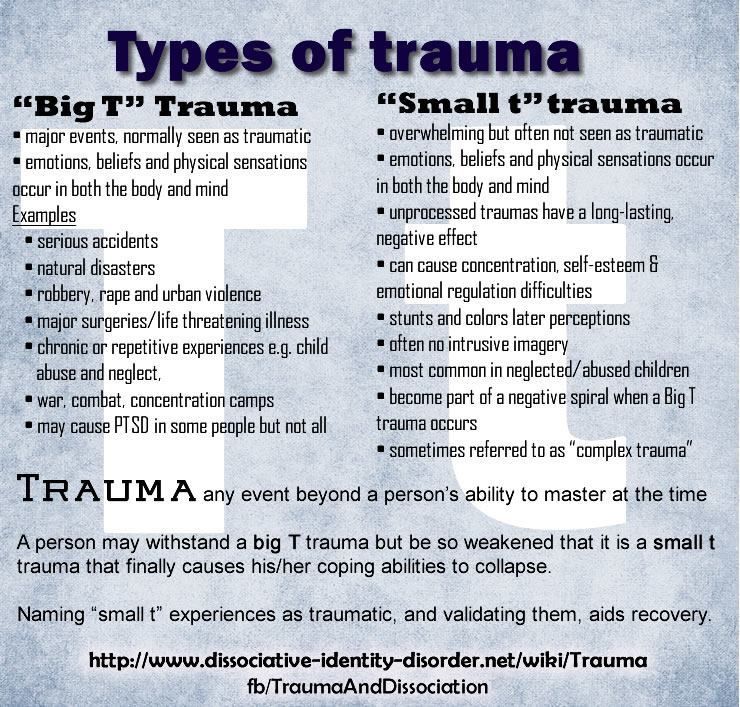
But sometimes an incomplete experience in the past blocks access to our feelings and does not give the possibility of an immediate adequate response in the present. A person who experienced a traumatic event, but did not react to it, remains in the past, as it were. A traumatic event draws a person to itself and does not let go. For this reason, the likelihood for such people to repeat the traumatic situation in the future is quite high. They seek to relive the traumatic event in order to respond to it. Example: veterans of the war in Afghanistan go to fight in "hot spots". It is widely known that people who have experienced psychological trauma are more likely to have accidents, they are more likely than others to commit suicide, and are addicted to alcohol and drugs [3].
No less dangerous is the development of distant mental disorders, the severity of which may be associated with untimely assistance in the acute period of trauma. With an increase in the time interval between the moment of receiving a psychic injury and the beginning of assistance, as well as in cases of insufficient assistance, some of the victims leave the field of vision of psychologists and social workers, and these circumstances increase by 3-4 times the likelihood of developing post-traumatic stress disorder.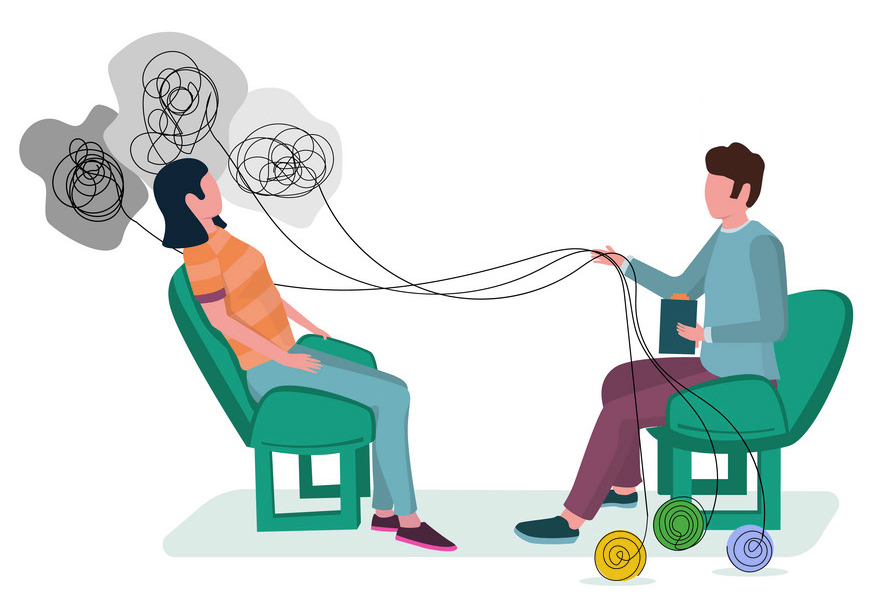
In the acute period, emotional deformations, phobias, reactive depression, adaptive difficulties, psychosomatic disorders are pronounced, manifested in somatic sensations of "coma in the throat", shortness of breath, heaviness in the arms and legs [1].
The chronic form of the projection of traumatic experience is distinguished by the "effect" of the prolongation of crisis states, the long-term consequences of traumatic stress. It occurs after a certain period of time and lasts from six months or more. Combat veterans remember what they experienced and like to watch relevant events, clips on Youtube, a clear request for “video of trauma” has a high frequency of resuscitation of emotional memory pictures, it is common for a person to return to places and people who provoked psychological trauma in the past.
The phenomenon of retraumatization leads a person to where he was in mortal danger, where he lost a loved one, to memories. Typical are a constant feeling of fear, horror and helplessness and states associated with the obsessive, spontaneous occurrence of unwanted impressions.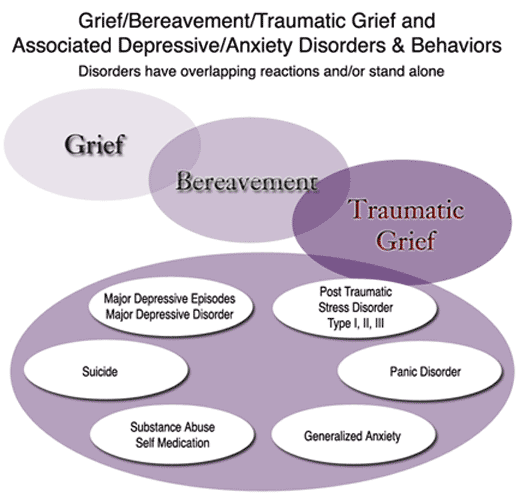 Unexperienced and poorly encapsulated psychological trauma makes itself felt under certain circumstances, on a certain date, returns and continues to lead, like a maniac, to the crime scene. Here works, first of all, the incompleteness of the situation, a powerful impression.
Unexperienced and poorly encapsulated psychological trauma makes itself felt under certain circumstances, on a certain date, returns and continues to lead, like a maniac, to the crime scene. Here works, first of all, the incompleteness of the situation, a powerful impression.
The psychological consequences of traumatic experiences are not equivalent. Experience at the subjective level depends on the stage of the process and the specifics of the psychotype. It can have a labile, acute and chronic, prolonged form of leakage. The labile model, we call it resistant, is characterized by a rather rapid recovery from shock, resistance to the impact of various threat factors, and the actualization of barrier functions [2].
Trauma care models. The criteria for the effectiveness of psychological overcoming of traumatic events are situational (loss of the negative significance of the situation), personal (reduction of depression) and adaptive (weakening of the feeling of vulnerability to stress).
The choice of technology for preventing and overcoming injuries is determined by the category of the contingent. For example, the problem of preventing and restoring the mental health of maladaptive and inclusive individuals is voluminous and costly in terms of time, labor, and economic parameters. Completely different projects should be included in the provision of psychological assistance to persons at risk for the formation of disorders of the
pathocharacterological spectrum or children with attention deficit hyperactivity disorder, autists.
Sometimes an incomplete experience in the past blocks access to our feelings and does not give the possibility of an immediate adequate response in the present.
Liberation is possible on the basis of a number of psycho-technologies.
When working with trauma, the basic elements of NLP are used, the methods of M. Erickson (attachment, leading, calibration, adjustment), the constellation method, which is most relevant for transgenerational injuries. It is not always known what happened in the family system several generations ago. The spreading technique can help you find the root cause while looking at multiple generations. Working out family history using the method of family constellations allows you to unravel the complex tangle of family histories, identify connections between generations and break the chain of unconscious repetitions so that a person can realize his own destiny and use his chance in life.
It is not always known what happened in the family system several generations ago. The spreading technique can help you find the root cause while looking at multiple generations. Working out family history using the method of family constellations allows you to unravel the complex tangle of family histories, identify connections between generations and break the chain of unconscious repetitions so that a person can realize his own destiny and use his chance in life.
At the present time, psychotechnologies based on retrospective work have received a social resonance. This is the work of a person to understand the attitude towards himself and his life, which includes retrospective work, during which a person “moves” into his past, remembers his life, experiences life events that have already taken place, and restructures them. In the experience of the individual there are certain starting points, where lines of transformation of mental contents originate, with the unfolding of which a person deals at the actual moment.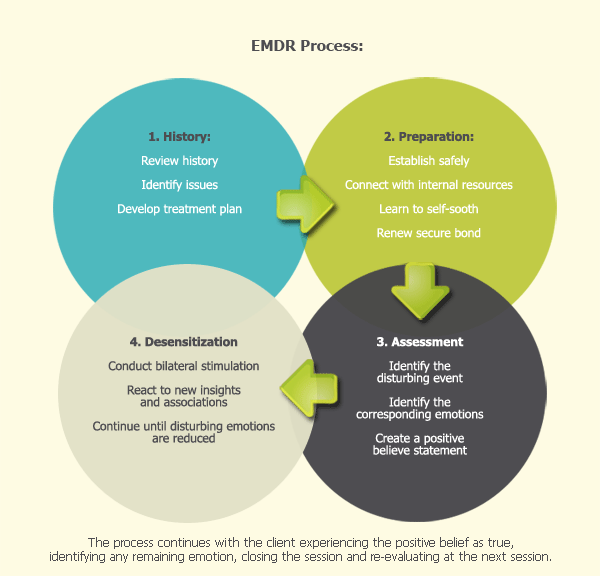 Therefore, it is extremely significant to reveal the connection between existing being and the foundations of life. In the broadest sense, retrospective work is the progression of the process of work of the individual from some actual point to the previous one.
Therefore, it is extremely significant to reveal the connection between existing being and the foundations of life. In the broadest sense, retrospective work is the progression of the process of work of the individual from some actual point to the previous one.
This logic of reasoning makes it possible to single out different subtypes of retrospective work. The first one is carried out as the movement of processes from the actual moment, "here and now", the present to the previous, past, past. Psychoanalytic practice is structured mainly in accordance with this form of movement of work. In the second subspecies, retrospective work occurs as a movement from the supposed, imagined, fantasized future to the present. We are talking about the psychological development of the actual life situation in the light of the expected imaginary future [5].
We highlight the SIBAM technique, which is applicable for overcoming traumas associated with grief, loss, humiliation, conflicts, traumas that damage the self, self-worth of the individual.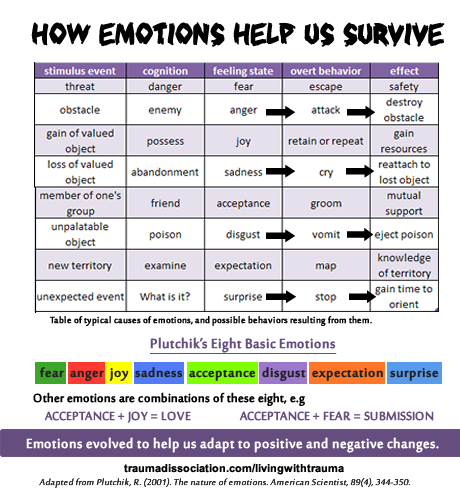 In working with the actual trauma and its consequences in consultative practice, such specific concepts-metaphors as "trauma funnel" and "healing funnel" are used. The funnel of trauma is the result of the interruption of the free flow of once experienced sensation caused by trauma. Excess energy linked to trauma
In working with the actual trauma and its consequences in consultative practice, such specific concepts-metaphors as "trauma funnel" and "healing funnel" are used. The funnel of trauma is the result of the interruption of the free flow of once experienced sensation caused by trauma. Excess energy linked to trauma
experience becomes a funnel, or whirlwind, outside the main flow of experience [4].
A traumatic funnel is like a reservoir into which the nervous system discharges excesses of unrealized energy, originally directed to the implementation of a protective reaction. The funnel is controlled by traumatic symptoms in such a way as to warn the subject against overload [6].
Individuals in the trauma funnel experience symptoms such as fear, dizziness, depression, tightness, loss of strength, experiencing narrowed perception. Traumatic symptoms at the level of the body manifest as negative bodily sensations—coldness, tension, discomfort, muscle tremors, and so on.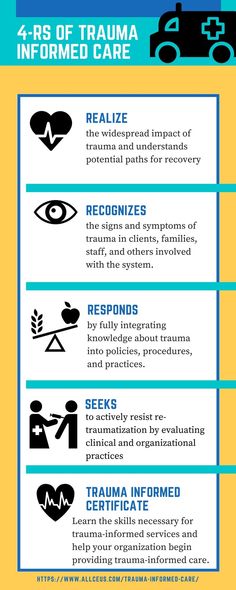
Traumatic vortex has the opposite meaning, "healing vortex". The construction of a "healing funnel" occurs due to the conscious feeling of bodily experiences, which helps to build the resources necessary for the living of "canned" impulses, and opens up access to the energy "frozen" in the traumatic funnel. The building of a "funnel of healing" is indicated by such bodily manifestations as sipping, feeling warm, feeling waves of energy, relaxation, comfort, a feeling of lightness, a sense of present time. Building a healing funnel is like putting a cast on a broken arm, which creates a protected, safe space for healing.
Trauma counseling is based on working with both funnels. Overcoming the consequences of trauma occurs as a result of the dialogue between the trauma funnel and the healing funnel, the meeting of traumatic and healing experiences. In order to successfully resolve trauma, it is necessary to work with the holistic experience of the client.
Work on the SIBAM system. Each of the funnels has five steps.
Each of the funnels has five steps.
At the first stage of healing, traumatic reactions are “completed” and the natural resources of the body, blocked 9, are released0003
traumatic impact (P. Levin). In working with trauma, it is necessary to give "due to the body." Trauma is formed at the bodily level, and there are processes in the body that allow you to heal from trauma. The concept of resources is defined as a positive sense of self, a sense of one's Self - one's strength and vitality, which is accompanied by positive experiences at the level of the body. This is what helps a person maintain and maintain a stable sense of himself and his own inner integrity in the face of possible destruction in trauma, which occurs primarily due to reduced activation of individual resources necessary to overcome the traumatic event. Factors that lead to the formation of traumatic symptoms include the inability to effectively counteract the stressor, the inability to resist or escape, the inability to discharge energy blocked in a state of numbness. These resources are built into instinctive response, which manifests itself in involuntary bodily reactions of a person. “If we continue to ignore our ability to actively change our instinctive responses, we will remain in a state of numbness, pain and unfreedom” (Levin, 1997). In contrast to the principles of cathartic therapy, P. Levin offers a new strategy: do not discard your instincts, but rely on them. He considers instinctive behavior as a source of the body's ability to self-regulate [4].
These resources are built into instinctive response, which manifests itself in involuntary bodily reactions of a person. “If we continue to ignore our ability to actively change our instinctive responses, we will remain in a state of numbness, pain and unfreedom” (Levin, 1997). In contrast to the principles of cathartic therapy, P. Levin offers a new strategy: do not discard your instincts, but rely on them. He considers instinctive behavior as a source of the body's ability to self-regulate [4].
The second stage is aimed at rethinking one's image (image), image style, changing the submodalities of the stressful image, the characteristics of the perception of the surrounding world, changing the scale of traumatic events [9].
The third stage of the healing funnel involves behavior change. Positive, visualized images, parables, fairy tales, metaphors, elements of provocative therapy by F. Farelli are used. It is advisable to turn to such areas as V. Frankl's logotherapy, J.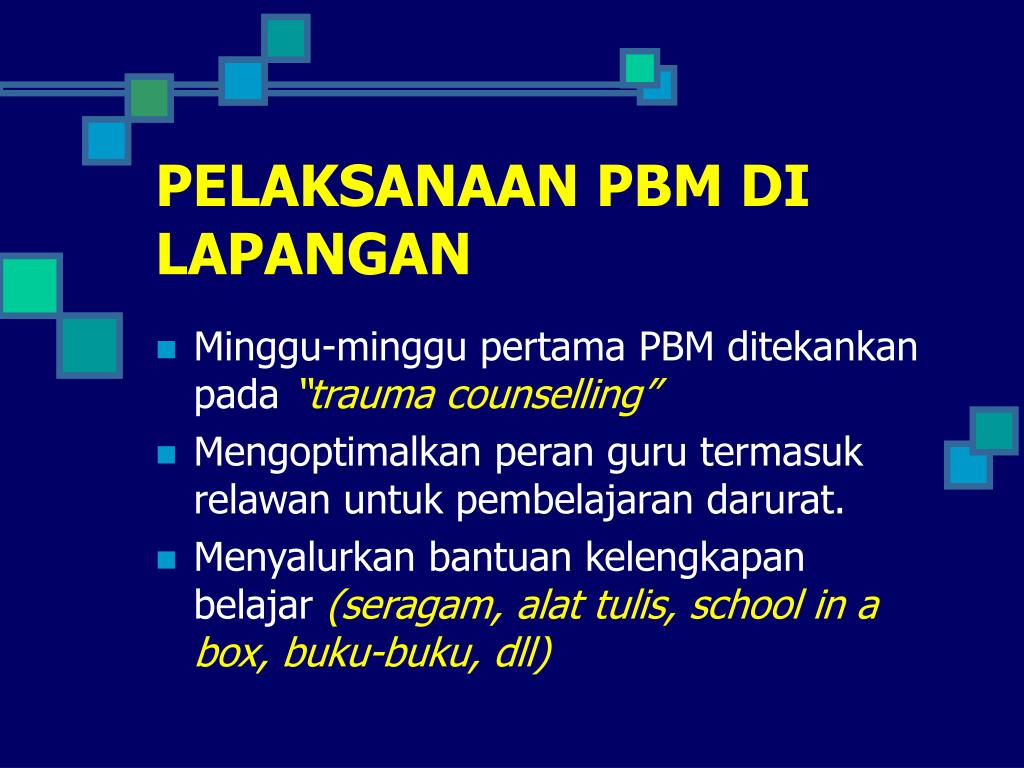 Bugental's existential-humanistic psychotherapy, and F. Perls' gestalt therapy. The representative of existential therapy I. Yalom proposed to consider all the psychological problems of traumatic experience from the point of view of "existential givens", such as "death", "freedom", "isolation", "meaninglessness", which are the unchanging conditions of human existence [9]. In a traumatic situation, these themes act as the content of experience, and traumatic states are reactions to these givens. In the process of searching, there is a knowledge of oneself, one's Self, the disclosure of one's potential at a deep level, a change in one's identity. The process of completing a traumatic experience requires living and gaining other experiences, such as forgiveness, goodbye and gratitude, which help resolve the traumatic situation [6]. These techniques can be called techniques of internal process work (E.S. Mazur).
Bugental's existential-humanistic psychotherapy, and F. Perls' gestalt therapy. The representative of existential therapy I. Yalom proposed to consider all the psychological problems of traumatic experience from the point of view of "existential givens", such as "death", "freedom", "isolation", "meaninglessness", which are the unchanging conditions of human existence [9]. In a traumatic situation, these themes act as the content of experience, and traumatic states are reactions to these givens. In the process of searching, there is a knowledge of oneself, one's Self, the disclosure of one's potential at a deep level, a change in one's identity. The process of completing a traumatic experience requires living and gaining other experiences, such as forgiveness, goodbye and gratitude, which help resolve the traumatic situation [6]. These techniques can be called techniques of internal process work (E.S. Mazur).
The fourth stage (affect) involves the stabilization of the emotional background of the individual. In order to get rid of stress, you need to focus not on your negative emotions, but on positive experiences. You should not think about problems, but about ways out of them. The first step towards this is the creation of an appropriate verbal formula (affirmation) that would symbolize the future goal. It can be expressed in one word (“health”, “courage”), or it can be formulated as a whole sentence (“I really want to pass the exam with excellent marks”), as well as in the form of a mental screen. However, using such a verbalized way of achieving the goal, we may encounter difficulties along the way of its implementation. This is due to the fact that the human subconscious reacts poorly to verbal formulas and is much more receptive to sensory images created in the mind. In traumatic conditions, paradoxical intention is used (V.M. Bekhterev). Its task is to hack, break the circular mechanisms and response patterns of phobias and obsessive states. A person is required to want the realization of that (with a phobia) or, accordingly, to realize what he is so afraid of.
In order to get rid of stress, you need to focus not on your negative emotions, but on positive experiences. You should not think about problems, but about ways out of them. The first step towards this is the creation of an appropriate verbal formula (affirmation) that would symbolize the future goal. It can be expressed in one word (“health”, “courage”), or it can be formulated as a whole sentence (“I really want to pass the exam with excellent marks”), as well as in the form of a mental screen. However, using such a verbalized way of achieving the goal, we may encounter difficulties along the way of its implementation. This is due to the fact that the human subconscious reacts poorly to verbal formulas and is much more receptive to sensory images created in the mind. In traumatic conditions, paradoxical intention is used (V.M. Bekhterev). Its task is to hack, break the circular mechanisms and response patterns of phobias and obsessive states. A person is required to want the realization of that (with a phobia) or, accordingly, to realize what he is so afraid of.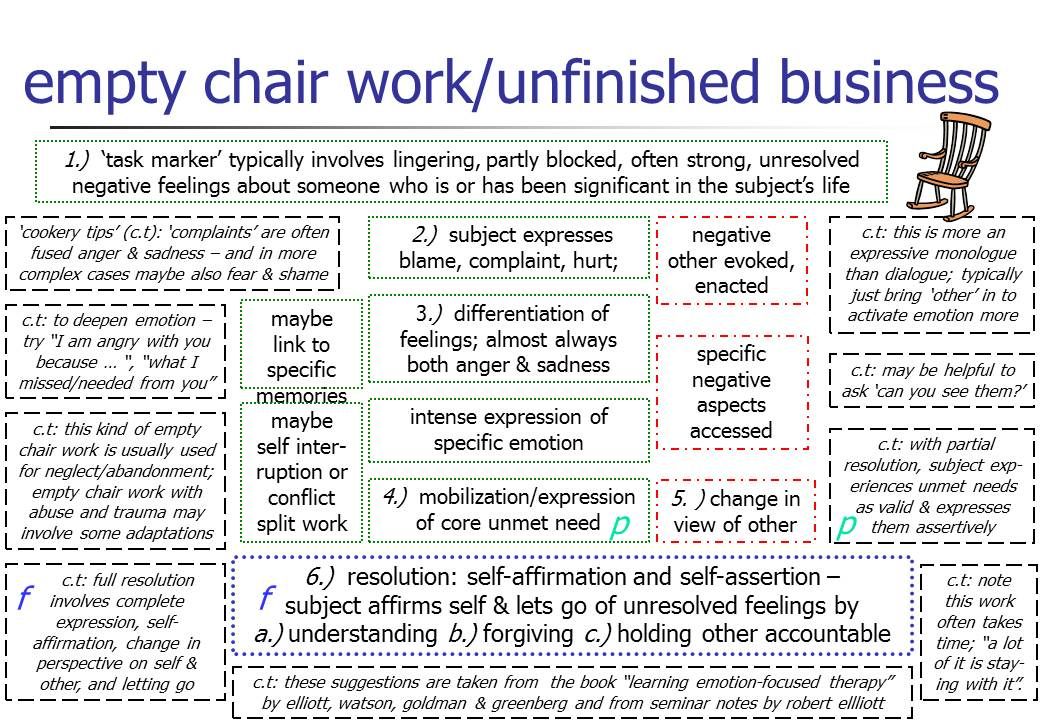 overcoming the protective mechanisms of projection, retroflection, introjection, fusion [1; 5].
overcoming the protective mechanisms of projection, retroflection, introjection, fusion [1; 5].
The fifth step (meaning) is aimed at changing the semantic component [8]. The meaning component is an important part of experiencing trauma. Not only the deepest layers of the personality, but also its most “summit” semantic contents (V. Frankl) undergo trauma transformation. The fact is that any extraordinary situation, as a special form of human existence, initiates the creation of meaning of a person, the outcome of which is dual: on the one hand, semantic neoplasms create a semantic fabric for existence in a new reality in which a person lives, on the other hand, new meanings lay the foundations for which we denote by semantic doubling. What creates seeming progress in anomalous reality, in everyday life, in the world of return, turns into a regression. The meaningful experience gained by a person in an anomaly now becomes a burden for him, a heavy burden of life, which he rejects as something alien and alien.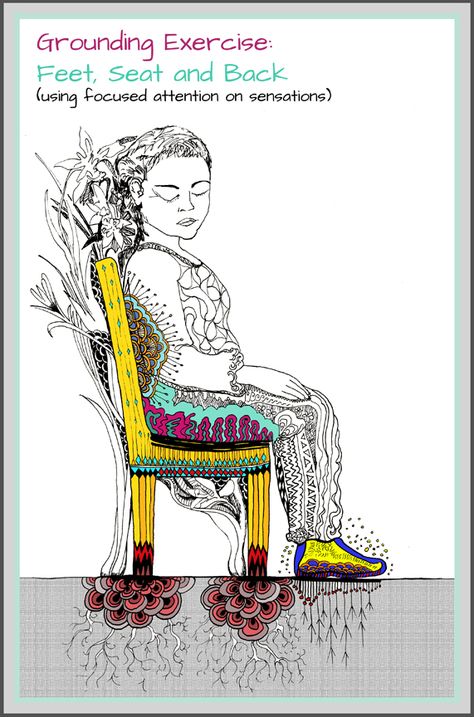 “There was no need to fight,” the veteran of Chechnya said bitterly, “a lot of guys were killed, a lot of blood was shed, and all this for nothing.” This creates the ground for a semantic conflict that plays the role of an etiological factor in PTSD (Magomed-Eminov, 1997). What happens is what can be called semantic alienation: a person himself becomes a stranger for himself with this sense. Let us pay attention to the non-identity of the concepts of alienation and alienation [5].
“There was no need to fight,” the veteran of Chechnya said bitterly, “a lot of guys were killed, a lot of blood was shed, and all this for nothing.” This creates the ground for a semantic conflict that plays the role of an etiological factor in PTSD (Magomed-Eminov, 1997). What happens is what can be called semantic alienation: a person himself becomes a stranger for himself with this sense. Let us pay attention to the non-identity of the concepts of alienation and alienation [5].
A semantic conflict is a contradiction between meanings or semantic structures that are not connected in the process of their correlation into a hierarchized unity within one personal integrity. Meanwhile, two semantic centers polarize semantic contents around themselves, which, when crossing with each other, enter into conflict relations of mutual meaninglessness, creating what can be called a loss of meaning
(Magomed-Eminov, 1996).
Semantic aspects of psychological trauma are considered in the European direction of existential therapy - V.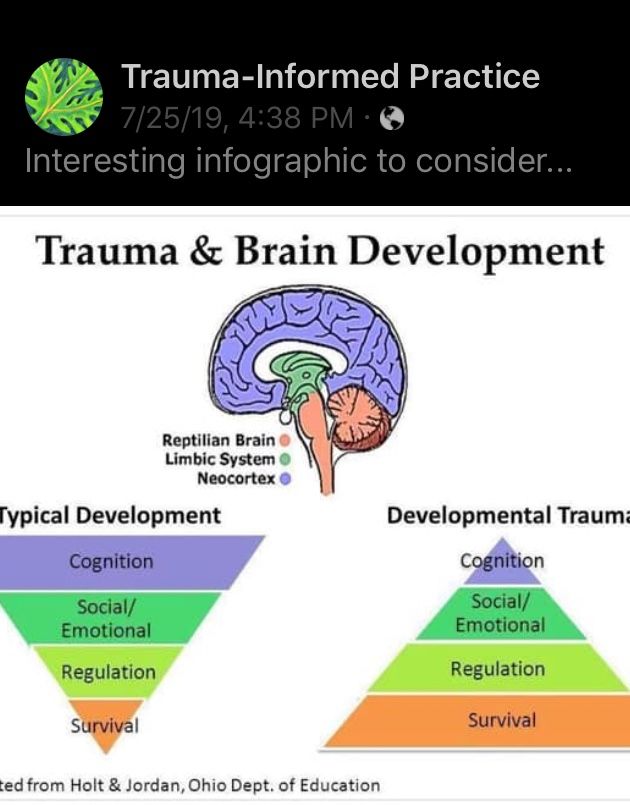 Frankl's logotherapy. Logotherapy is based on the position that the desire for meaning is the basic motive of human behavior, and believes that psychological trauma is caused by the loss of vital meanings and values by a person. Psychological trauma is experienced mainly as unexpected, causeless, and therefore perceived as meaningless and, therefore, difficult to bear. This circumstance forces those affected by the traumatic event to seek some explanation for what happened, so that the traumatic suffering becomes more meaningful for them and, therefore, easier to bear (Frankl, 19).82). From this it is clear that psychological trauma puts a person in front of the need to replenish the lost meaning. Frankl believes that meaning cannot be invented, it can only be realized and discovered. It is important that it cannot simply be taken from the outside, since it is formed at the intersection of the internal in a person (his freedom and responsibility for his own choice) and the external (the requirements that life puts before a person and which he makes meaningful).
Frankl's logotherapy. Logotherapy is based on the position that the desire for meaning is the basic motive of human behavior, and believes that psychological trauma is caused by the loss of vital meanings and values by a person. Psychological trauma is experienced mainly as unexpected, causeless, and therefore perceived as meaningless and, therefore, difficult to bear. This circumstance forces those affected by the traumatic event to seek some explanation for what happened, so that the traumatic suffering becomes more meaningful for them and, therefore, easier to bear (Frankl, 19).82). From this it is clear that psychological trauma puts a person in front of the need to replenish the lost meaning. Frankl believes that meaning cannot be invented, it can only be realized and discovered. It is important that it cannot simply be taken from the outside, since it is formed at the intersection of the internal in a person (his freedom and responsibility for his own choice) and the external (the requirements that life puts before a person and which he makes meaningful).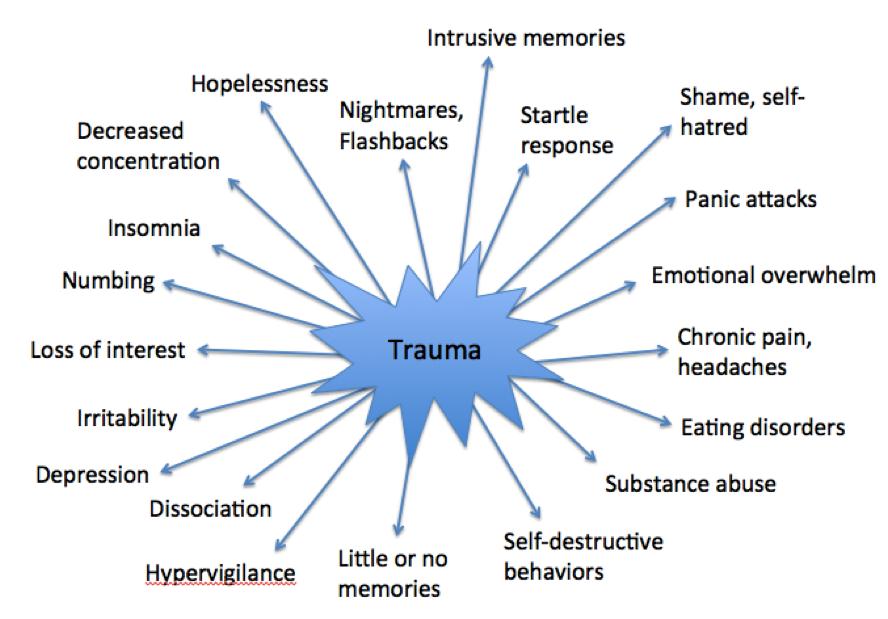 The acquisition of meaning, according to V. Frankl, is achieved in several ways - by performing activities in relation to other people: in the process of creativity, when freedom of attitude to reality and actions in it is manifested, and a person develops a certain position regarding various life situations; in the course of experiencing, that is, the experience of a person acquiring experiences in relation to the phenomena of the surrounding world in all their originality and uniqueness [8].
The acquisition of meaning, according to V. Frankl, is achieved in several ways - by performing activities in relation to other people: in the process of creativity, when freedom of attitude to reality and actions in it is manifested, and a person develops a certain position regarding various life situations; in the course of experiencing, that is, the experience of a person acquiring experiences in relation to the phenomena of the surrounding world in all their originality and uniqueness [8].
Psychological trauma puts a person in front of the need to make up for the lost meaning. The acquisition of meaning, according to V. Frankl, is achieved in several ways - by performing activities in relation to other people and the experience of acquiring experiences in relation to the phenomena of the surrounding world. Changing the attribution of meaning contributes to the feeling of control over the trauma as a common end goal [8].
Thus, the strategy of the counseling program for overcoming traumatic experience is based on the classical methodological positions of world science and the actualization of personality mechanisms.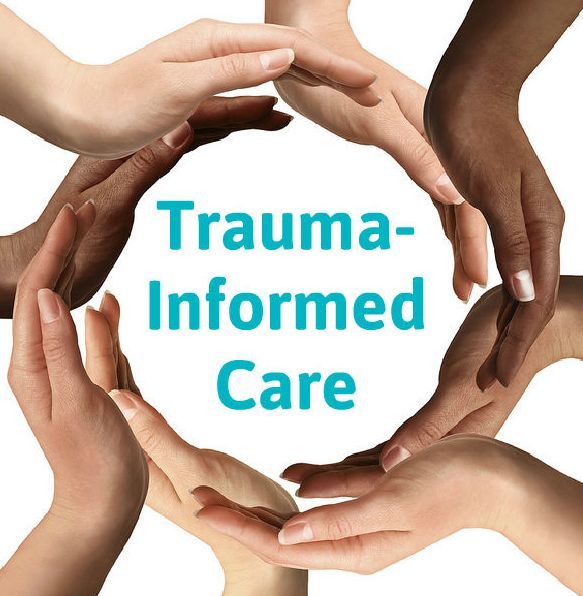 Based on these positions, in our consultative work we came to the conclusion that it is necessary to use in the practice of preventing the consequences of traumatic experience the mechanism of transforming traumatic experience into a healing experience on the basis of SIBAM. The accompanying factor of successful transformation can be the factor of personality transcendence, i.e. its creative activity based on dominant mechanisms. Transcending refers to the highest and most inclusive or holistic levels of human consciousness, behavior and relationship - as an end, not a means - to oneself, to significant others, to people in general, to other species, to nature and to the cosmos. Transcending, i.e. going beyond the conscious self is, according to
Based on these positions, in our consultative work we came to the conclusion that it is necessary to use in the practice of preventing the consequences of traumatic experience the mechanism of transforming traumatic experience into a healing experience on the basis of SIBAM. The accompanying factor of successful transformation can be the factor of personality transcendence, i.e. its creative activity based on dominant mechanisms. Transcending refers to the highest and most inclusive or holistic levels of human consciousness, behavior and relationship - as an end, not a means - to oneself, to significant others, to people in general, to other species, to nature and to the cosmos. Transcending, i.e. going beyond the conscious self is, according to
A. Maslow, the main characteristic of mental health.
LITERATURE
1. Kalshed D. The inner world of trauma: Archetypal defenses of the personal spirit: Per. from English - M .: Academic Project, 2011. - 368 p.
2. Bugental J. The art of the psychotherapist. - SPb., 2001.
Bugental J. The art of the psychotherapist. - SPb., 2001.
3. Isaeva E.G., Ismailova E.K., Sutaeva A.R. Psychology of Personality. - M.: Parnas, 2016. - 126 p.
4. Levin P. The awakening of the tiger - the healing of trauma. - M.: AST, 2007.
5. Magomed-Eminov M.Sh. Personality transformation. - M.: Psychoanalytic Association, 2015. - 496 p.
6. Mazur E.S. Existential-somatic approach to work with psychological trauma // Psychology of corporality between soul and body / ed.-comp. V.P. Zinchenko, T.S. Levy. - M.: AST, 2005.
7. Perls F., Goodman P. Theory of Gestalt therapy. - M., 2015.
8. Frankl V. Search for the meaning of life and psychotherapy. - M., 2014.
9. Yalom I. Existential psychotherapy. - M., 2014.
Echoes of traumas of the past in psychological counseling
Year of publication and journal number:
2010, No. 4
| psychotherapy”, held on May 27-29, 2010 |
In the article deals with cases of working with clients whose problems are somehow connected with the traumatic events of the last century in Russia, and also describes the methods of psychological assistance in these situations .
In my report, I would like to talk about cases of working with clients, where the topic of traumatic events in Russia of the 20th century is raised.
First of all, these days, clients come to psychological counseling who were eyewitnesses of war events with reactions of post-traumatic stress disorder that arose 50 years later. Trauma is cumulative. If you do not provide psychological assistance, then it can make itself felt at any moment.
For example, two retired sisters with clear signs of post-traumatic stress applied for help. Their story is as follows: when they were small (6 and 7 years old), the village in which they lived was in the center of the great tank battle of the Kursk-Oryol salient. Miraculously, they escaped by hiding in various cellars and ditches. After the war, they went to school, got higher education, created families, gave birth to children, everything was fine. When you retired at an alarming 19In the 1990s, a few months later, both began to develop symptoms of PTSD. Treatment using relaxation and imagery was successful, despite the fact that 50 years have passed since the traumatic events.
Treatment using relaxation and imagery was successful, despite the fact that 50 years have passed since the traumatic events.
Another variant of the influence of the past on the life of modern people is the presence of "blank spots" in family history. Concealment, suppression, distortion of information can be extremely destructive for the life of future generations. This is well shown in the article by Baker and Gippenreiter (1995) . To clarify the information, it is best, of course, to take up research, turn to archives, to witnesses. But if the search has not yielded results, can a psychologist help with something?
I will give an example of working with such a case.
Investigation of Tatiana's numerous psychological problems led to the end of the 1950s (when Tatiana was a first grader). Then a tragic event took place in the parental family of the client, the causes of which remained unsolved.
In one day, the life of a family consisting of a father who is a mathematician, a mother who is a geography teacher and two children - Tatyana and her younger brother - broke in two.
The father was taken away from the family and all communication with him was forbidden. The wife was informed that her husband had been imprisoned for raping his student.
For a year, the family did not know anything about him until a letter from his father from Kazakhstan arrived in their Ukrainian village, in which he said that he had some housing there, worked at a school and could invite them to his place.
The mother sold her property and with her two children went to her husband's shack with an earthen floor among the sands. But the union of the family did not bring the expected joy. My father said nothing about his disappearance or about how he spent that year. The mother believed that the father really raped the student. The family continued to live together, but already estranged and conflicted.
At the time of our work with the client, 40 years had passed since these events, and no one in the family knew what had happened.
In working with this client, the method of family reconstruction by Virginia Satir was used, the essence of which is that in the group the client chooses people to play the roles of their parents, grandparents, and other relatives. Then family histories of the life of the family are sequentially recreated, where mom was born, then dad, then the client himself. Methods are used: genogram, playing out events in accordance with the chronology, sculpture, psychodrama, the use of photographs. The client (in the terminology of V. Satir “Star”) observes the maturation of father, mother, experiences joyful and sad life events together with their families, can interact with their relatives, becomes a witness of the meeting of parents and their birth.
Then family histories of the life of the family are sequentially recreated, where mom was born, then dad, then the client himself. Methods are used: genogram, playing out events in accordance with the chronology, sculpture, psychodrama, the use of photographs. The client (in the terminology of V. Satir “Star”) observes the maturation of father, mother, experiences joyful and sad life events together with their families, can interact with their relatives, becomes a witness of the meeting of parents and their birth.
The most amazing thing about this method is the amazingly accurate reproduction of the feelings, reactions and personalities of the characters by the chosen players.
V. Satir said that we are more than we really are... It is amazing that a person who was born decades after the events played out and who has never seen his hero experiences the same strong feelings and even speaks in the same words that and character.
In Tatiana's re-enactment, the man playing the role of Tatiana's father firmly assured us from his role that the rape story is an absolute lie. So far, we can only guess about the true events, based on information that is increasingly becoming available to society. It was very important for the client that the accusation of rape was recognized as untenable. After the reconstruction, she rethought the behavior of the participants in the events and the consequences. Tatyana was able to understand and accept her loved ones, reconnect with her family roots, which undoubtedly brought positive dynamics to her condition and problem solving.
So far, we can only guess about the true events, based on information that is increasingly becoming available to society. It was very important for the client that the accusation of rape was recognized as untenable. After the reconstruction, she rethought the behavior of the participants in the events and the consequences. Tatyana was able to understand and accept her loved ones, reconnect with her family roots, which undoubtedly brought positive dynamics to her condition and problem solving.
Thirdly, the most difficult and interesting thing is working with clients with intergenerational trauma, which is transmitted to children and grandchildren.
In the following example, I want to share my own family history.
Working with my problems of self-criticism, fears and indecision, my psychotherapist A.V. Chernikov, using the imagery method, asked me to introduce my inner critic.
I imagined a small room with windows, in which a man in a leather jacket standing with a pistol in his hands, anxiously looking out the window.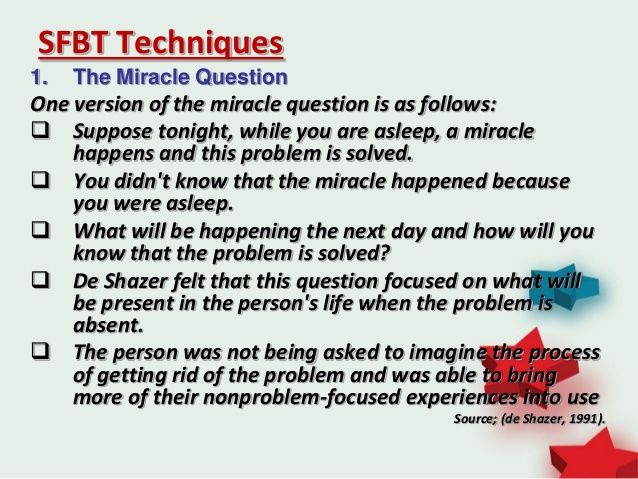 I saw myself next to him, sitting on the floor. The man wouldn't even let me raise my head. As soon as I tried to get up, instead of a pistol, a saber appeared in his hand, with which he pressed on my head, hiding me and forcing me to cling to the floor.
I saw myself next to him, sitting on the floor. The man wouldn't even let me raise my head. As soon as I tried to get up, instead of a pistol, a saber appeared in his hand, with which he pressed on my head, hiding me and forcing me to cling to the floor.
Free associations to this image led to memories of my grandfather on my mother's side. I didn't see him, he died 20 years before I was born. All I knew about him was that he was a military man and was a very strict father.
Then, together with the psychotherapist, we transformed the image: we changed clothes, disarmed, made it more calm and friendly. The therapist helped me design more useful work for the critic to do. As a result, he became responsible for health.
This work was very useful, but it was also important for me to clarify the origin of the problem. I began to ask my mother about my grandfather in more detail. It turned out that my grandfather was forced to sign false statements condemning innocent people. It was impossible not to sign. This caused him great suffering. My grandfather's greatest fear came when the people against whom he testified began to return from the camps. Grandfather was constantly waiting for revenge and was very much afraid. Leaving for work, he warned the children that if he did not return home today, it meant that he had been killed. This fear and the rule “Do not stick out” I apparently received from my grandfather through my mother. Now, talking about it, I feel pain. But there was also a feeling that I found a grandfather.
It was impossible not to sign. This caused him great suffering. My grandfather's greatest fear came when the people against whom he testified began to return from the camps. Grandfather was constantly waiting for revenge and was very much afraid. Leaving for work, he warned the children that if he did not return home today, it meant that he had been killed. This fear and the rule “Do not stick out” I apparently received from my grandfather through my mother. Now, talking about it, I feel pain. But there was also a feeling that I found a grandfather.
As a result, I'm standing in front of you and "leaning out"...
Both family therapists and specialists in systemic constellations confirm that children take on unresolved traumatic energies from previous generations. And then the child, faced with events that resemble traumatic ones and can cause similar feelings, experiences a strong shock. According to V.V. Dokuchaeva (Dokuchaev, Dokuchaeva, 2007), information is transmitted to descendants at the genetic level.



